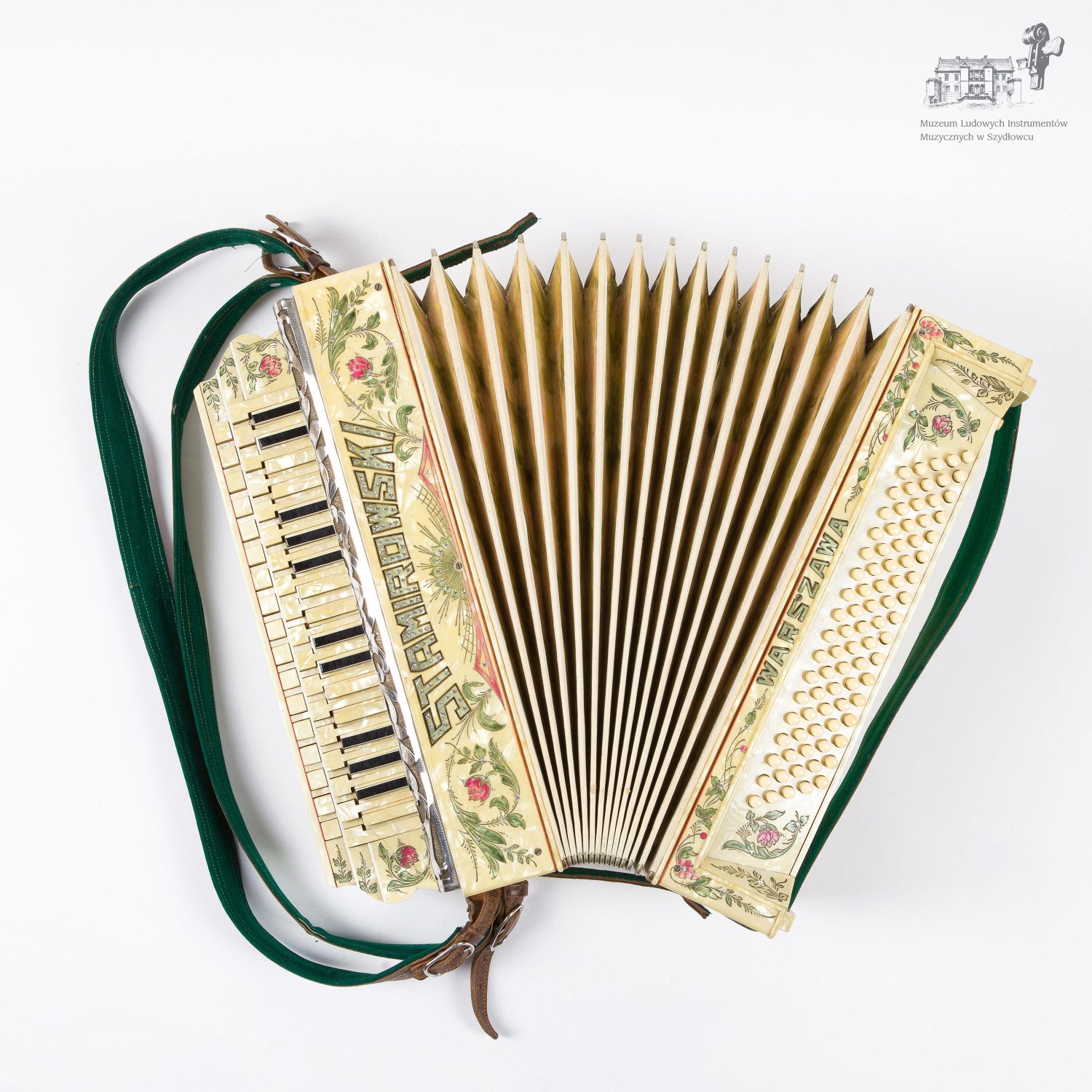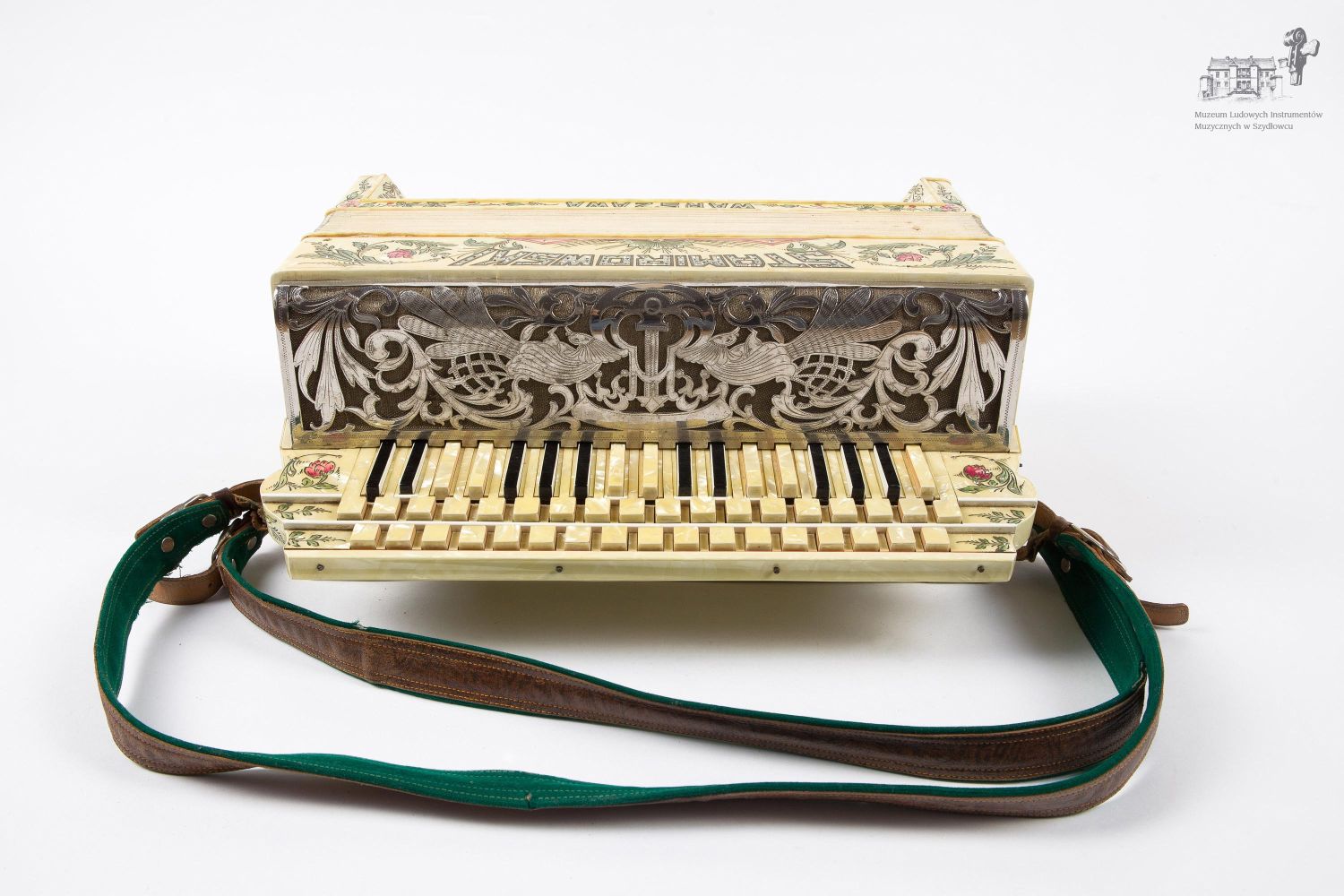accordion
accordion
Local name: harmonia ciągana (pulled accordion, hand accordion)Classification: 4 Aerophones / 41 Free aerophones / 412 Interruptive free aerophones / 412.1 Idiophonic interruptive aerophones or reeds / 412.13 Free reeds / 412.132 Sets of free reeds / 412.132-62-8 Sets of free reeds with flexible air reservoir, with keyboard
Maker: Stamirowski Piotr
Date: before 1932
Village / Town: Warsaw
Region: Mazovia
Country: Poland
Owner: Museum of Folk Musical Instruments in Szydłowiec
Inventory number: MLIM/MS/1535
Description: an accordion; called "white"; chromatic; three-row keyboard (17-18-17 keys), 85 basses (buttons).
Decoration: body embellished with engraved floral and anthropomorphic motives; open work with floral and zoomorphic patterns
Measurements: 410 x 232-315 x 184 mm
Materials: wood, metal, leather, paper, plastic
Inscriptions: Stamirowski Warszawa
Sound compass, tuning: different scales depending on the type and specimen; usually the melody keyboard is arranged in minor-third rows composing the chromatic scale B♭– b♭´´´, while the bass side is arranged in a chromatic scale
Performance practice: after World War I the accordion became a popular component of folk bands (together with the violin and the drum), the "pulled" variety becoming especially popular in Mazovia on the left side of the Vistula river (the areas of Łowicz and Rawa Mazowiecka) and in north Lesser Poland (the areas of Radom and Kielece)
Catalog card by: Monika Sadura / Zbigniew J. Przerembski
Kujawiak; The Band from Żychlin: Jan Orzechowski (1910-1974), three-row accordion, Roman Kowalewski (b. 1928), drum; rec. 1974; Sources of Polish Folk Music
<< Back












